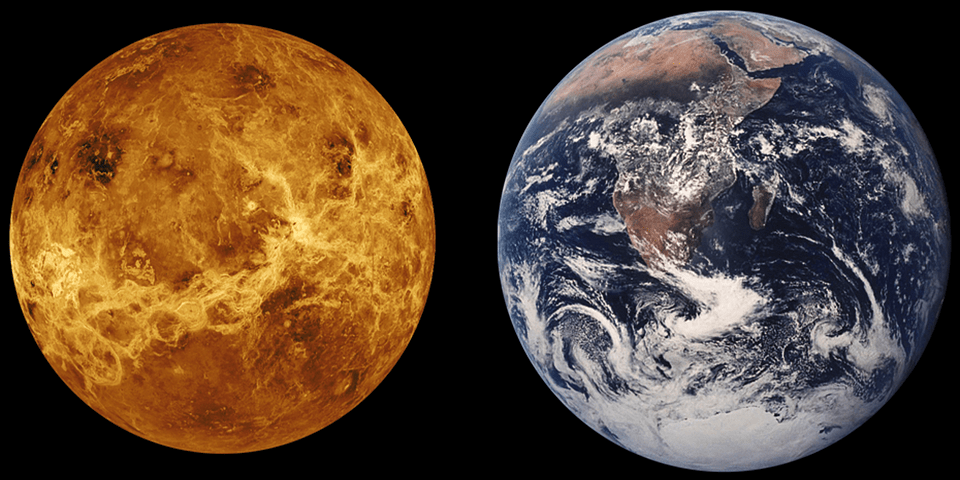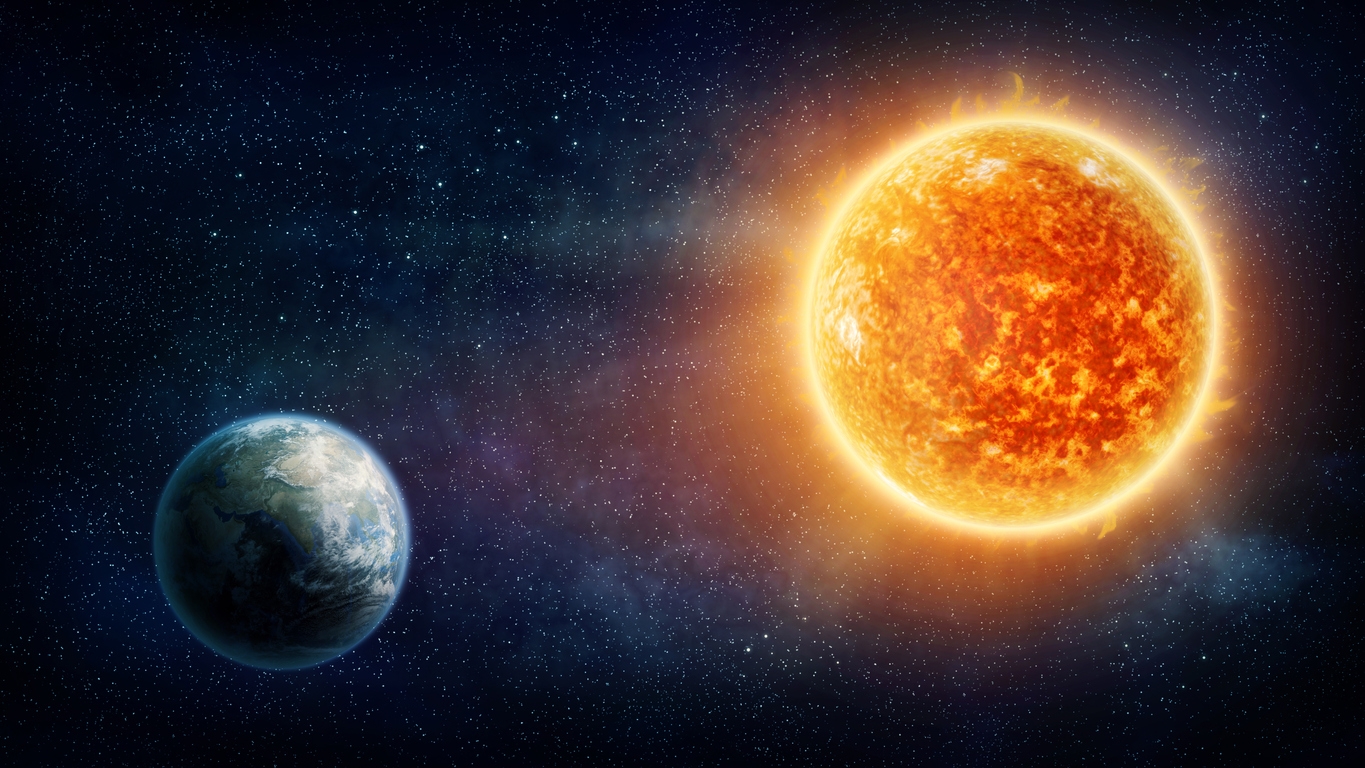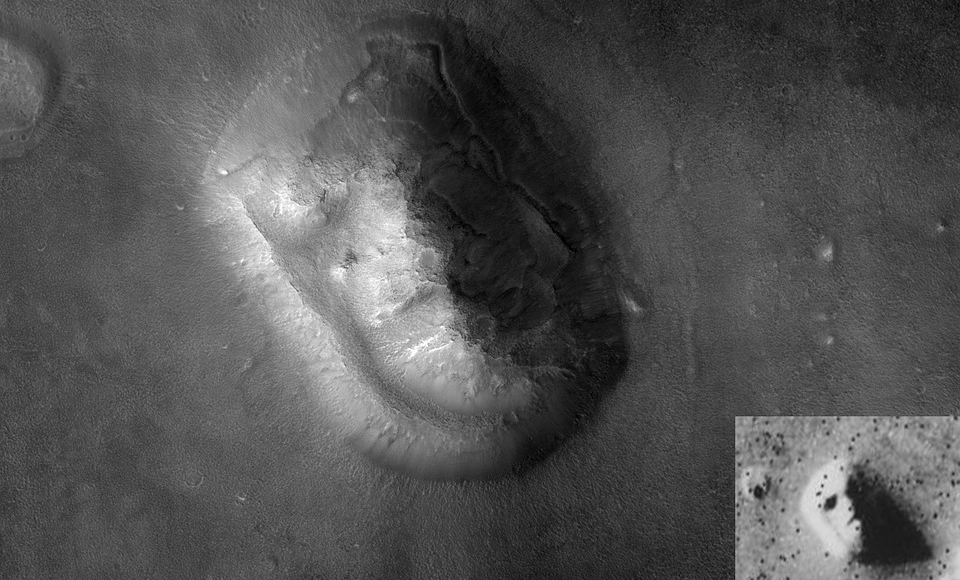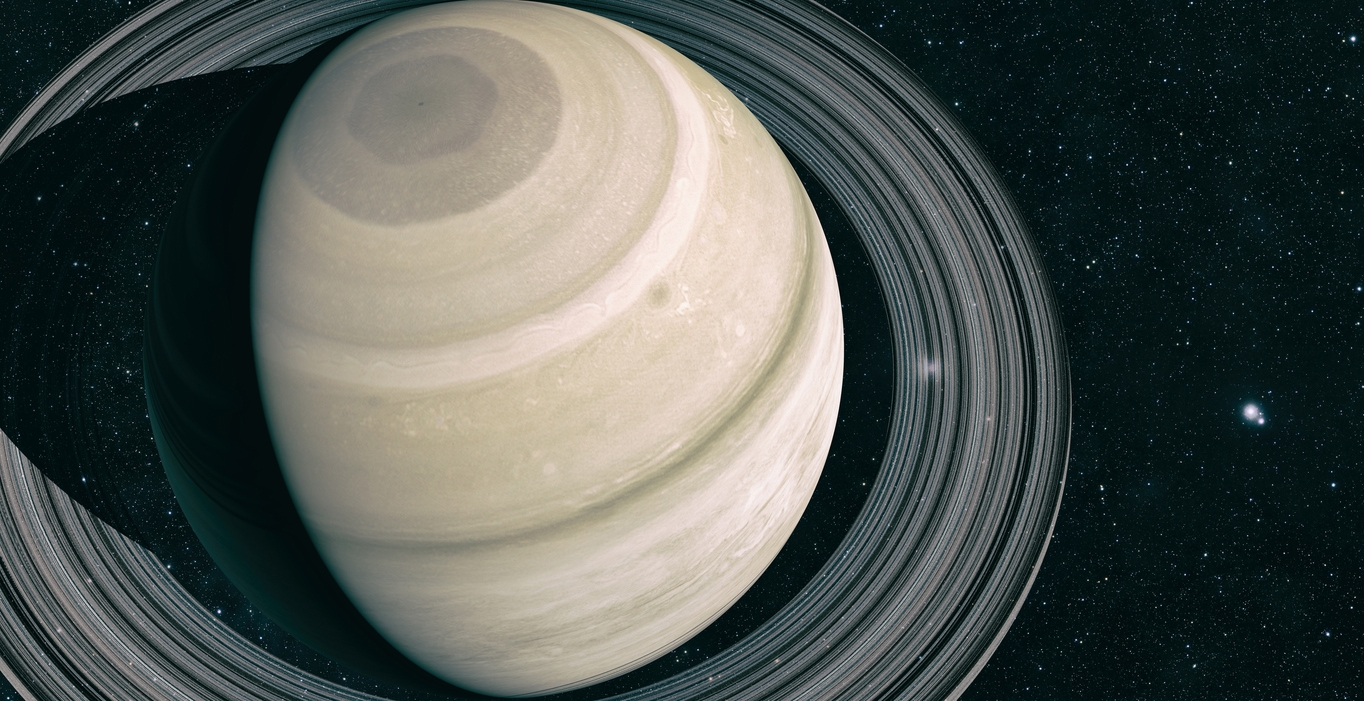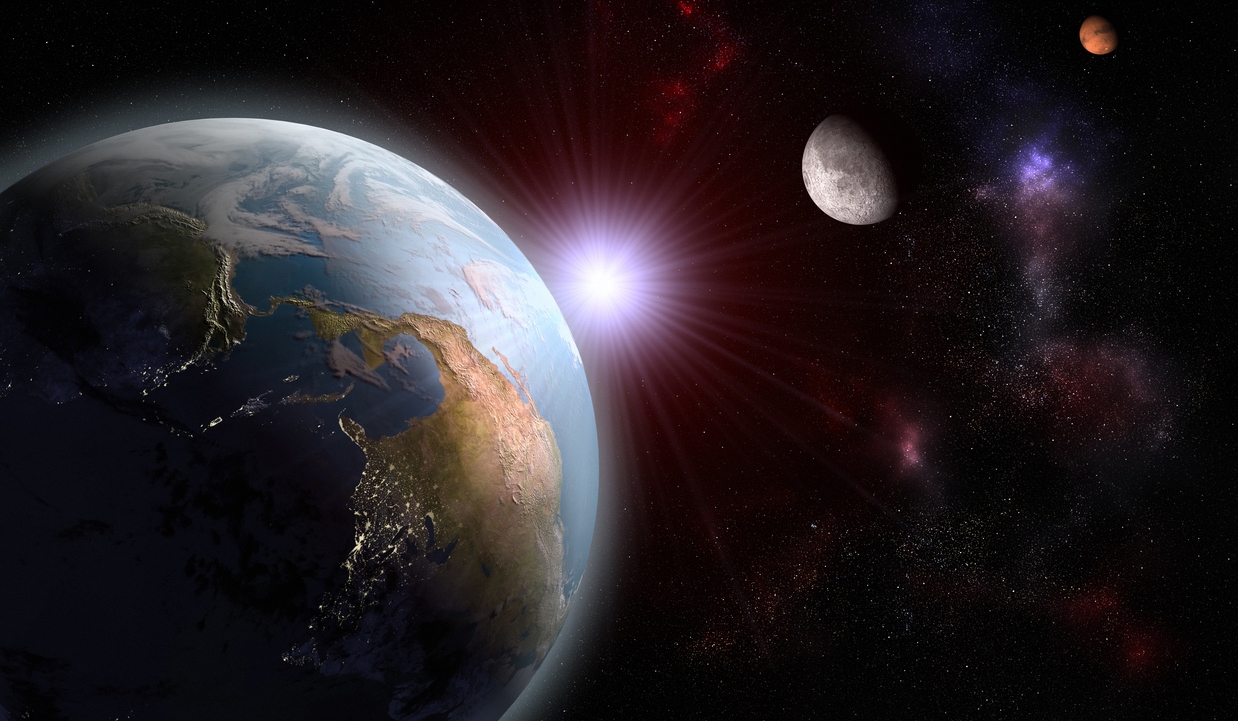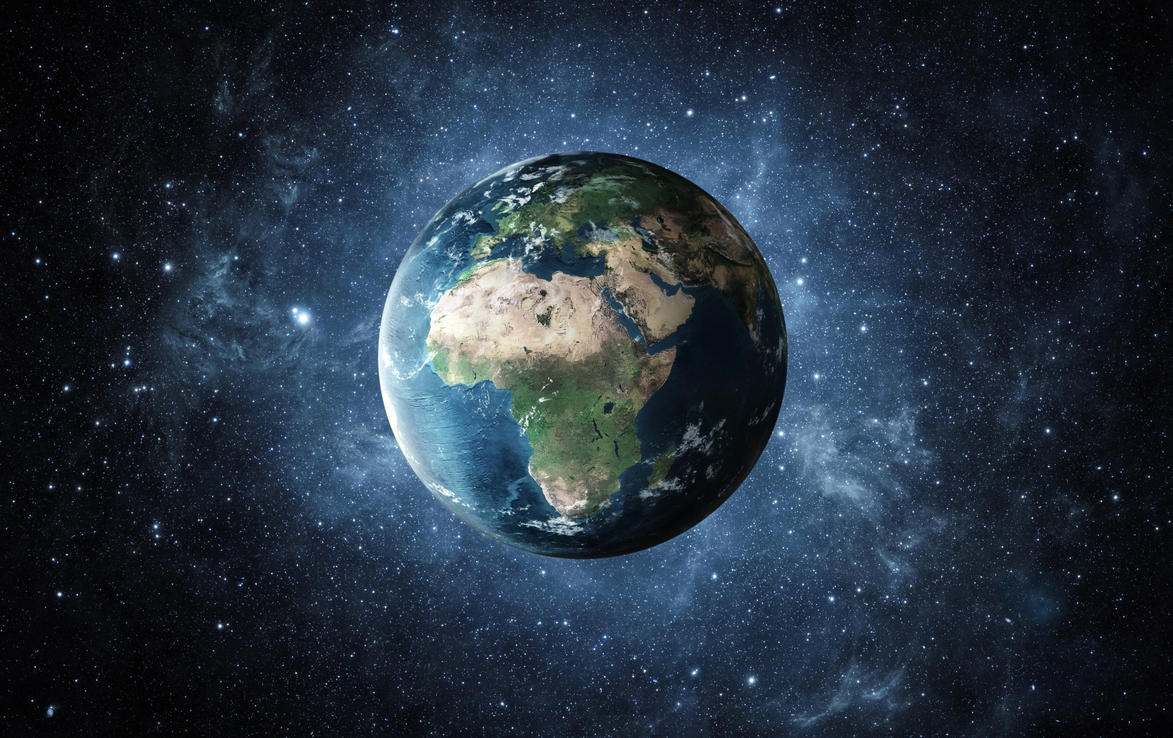Background
Our planetary system is known as “the solar system” and is situated in an outer spiral arm of the Milky Way galaxy. The word solar is used to describe anything related to our star and is derived from the Latin word for Sun, “Solis.” It is made up of our star, the Sun, and everything gravitationally connected to it, including the dwarf planet Pluto and the planets Mercury, Venus, Earth, Mars, Jupiter, Saturn, Uranus, and Neptune. In addition to that, there are also dozens of moons and millions of asteroids, comets, and meteoroids in our planetary system. [1]
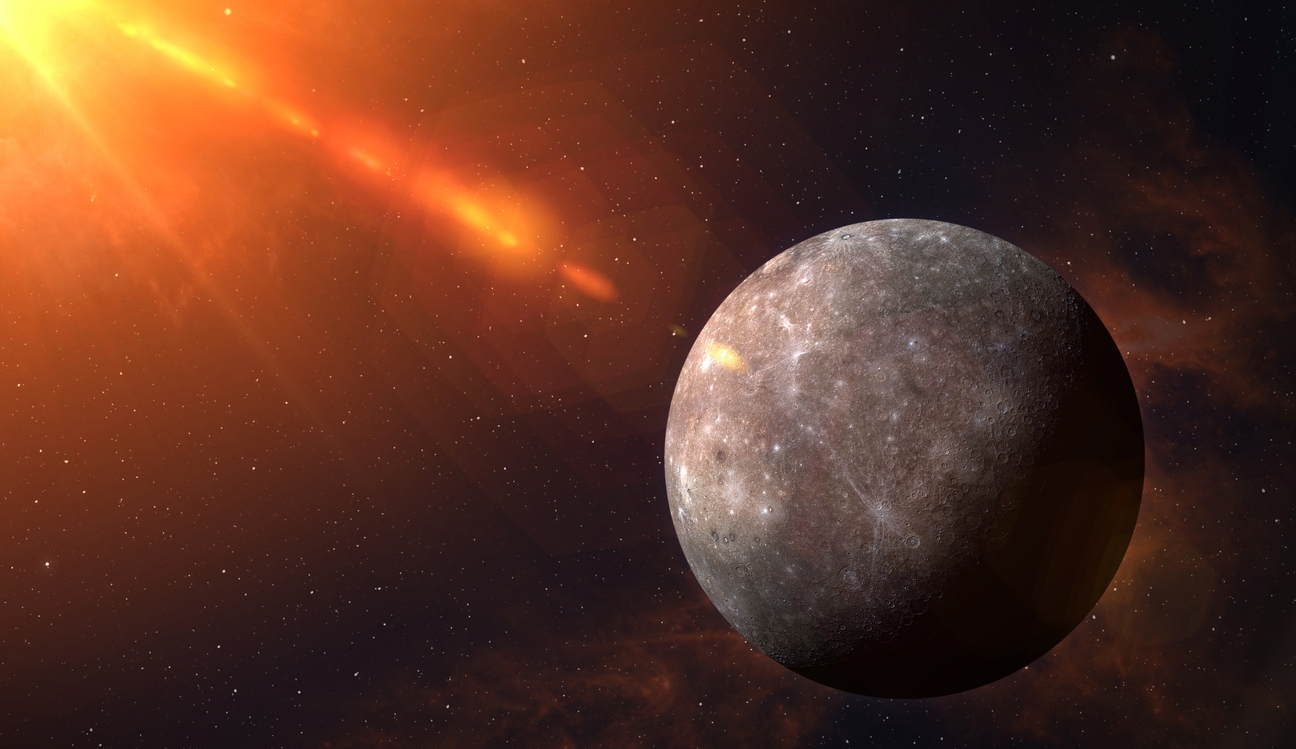
planet Mercury from the outer space
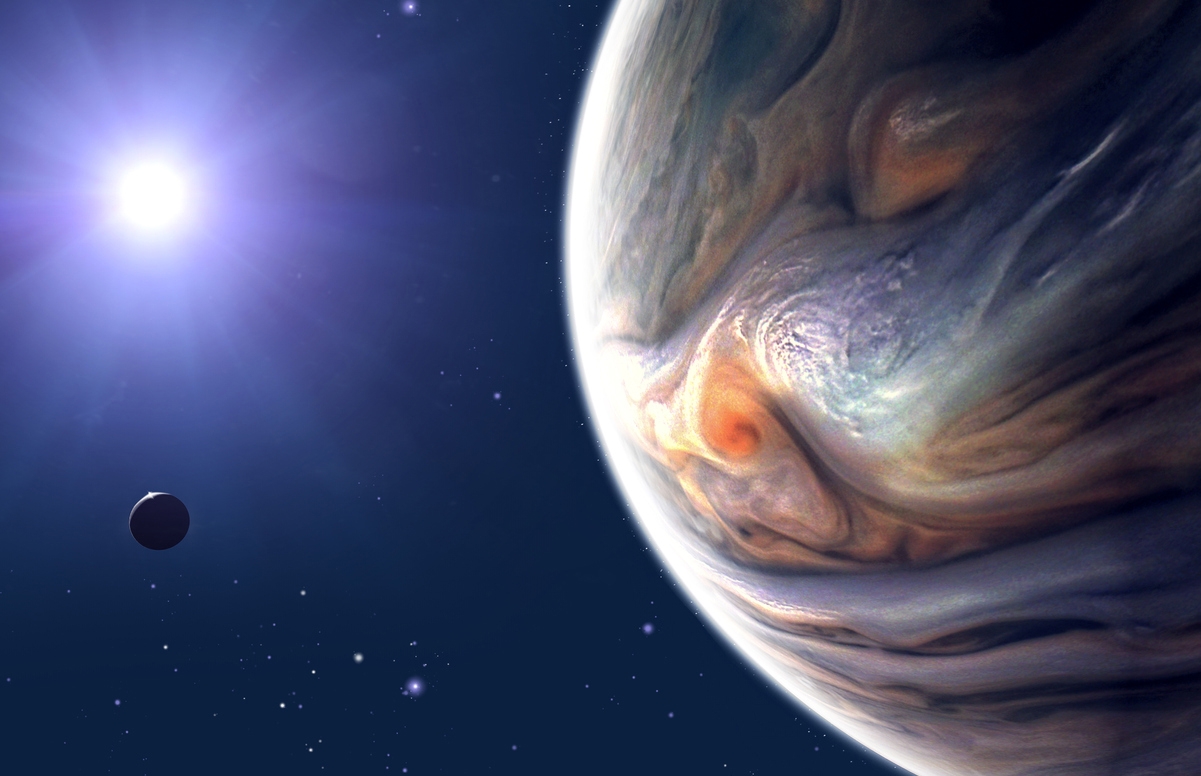
Jupiter with the view of the Sun
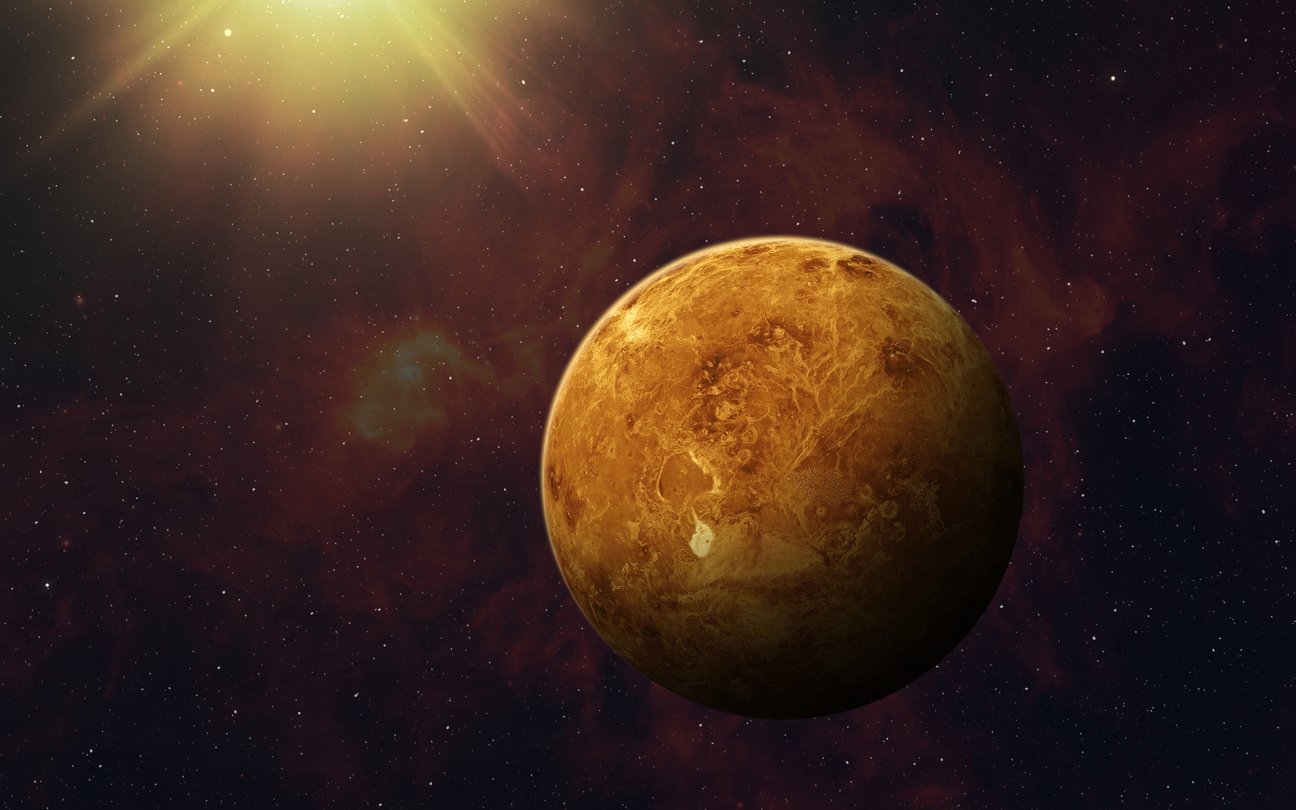
planet Venus
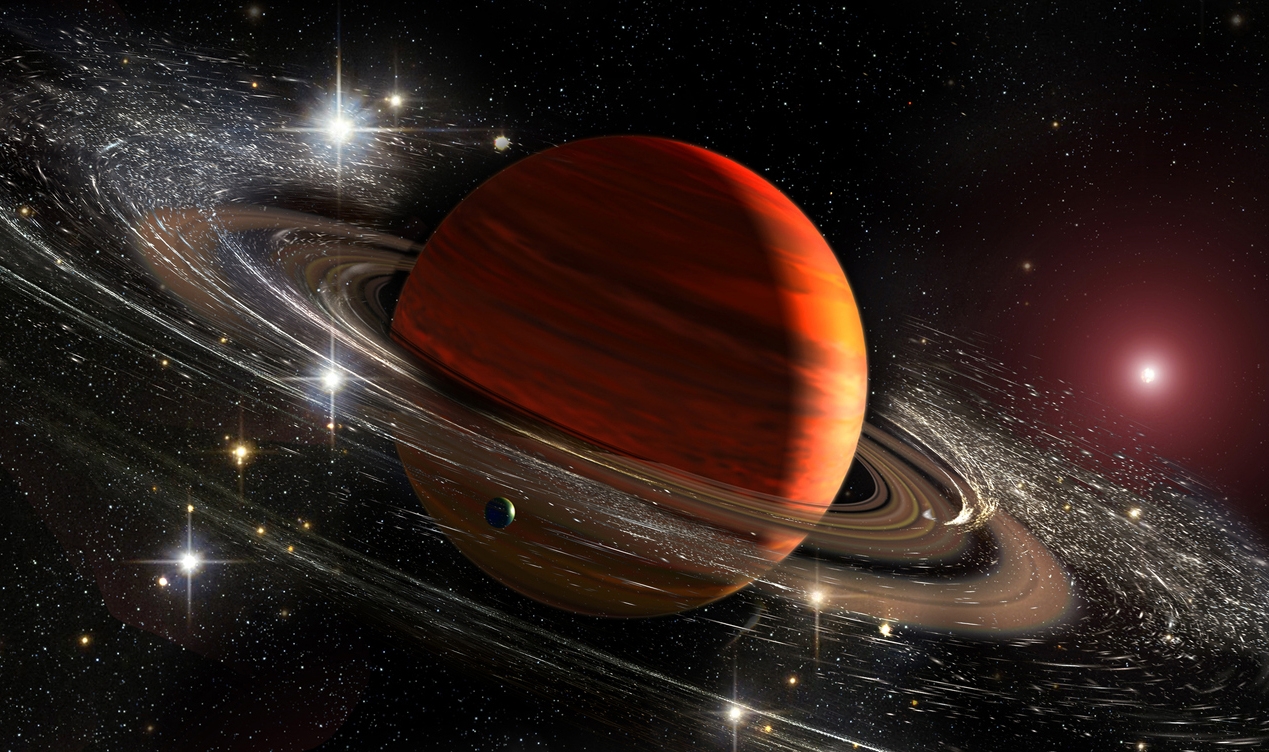
planet Saturn with its rings
In this post, we are going to focus on the planets included in the solar system. There are a lot of facts about these amazing planets, such as Jupiter being the biggest, Venus not having any moons, and Neptune having supersonic winds. However, when getting information about them, we also have to be careful as not all of the things we read in books and online articles are true, as many of them are only myths. There are times when these myths sound like they are true, as they have been believed by many people for so long. But today, it is time to debunk these myths. If you are curious about these, read on as we’re giving you the realities behind the common planetary myths.
Myth #1: Venus and Earth are identical.
Due to its resemblances to Earth in terms of size, mass, density, and volume, Venus is frequently referred to as our sister planet. Both planets are thought to have originated from the same condensing nebulosity 4.5 billion years ago, giving rise to them simultaneously. However, the similarities end there.
Venus lacks surface water and has an atmosphere that is toxic, heavy, and almost entirely composed of carbon dioxide with sulfuric acid clouds. The air pressure is more than 90 times higher at the surface than it is at sea level on Earth. At a scorching 750 K (890.33°F), Venus’ surface is the solar system’s warmest. A disastrous greenhouse effect brought on by the atmosphere’s high concentration of carbon dioxide is to blame for this high temperature. The atmosphere prevents incident sunlight from radiating into space, raising the surface temperature by over 475 K (395.33°F) as a result. [2]
The rotation of Venus is the last discrepancy between the two planets. First of all, the angle of its axis of rotation is 177.36 degrees (compared to 23.5 degrees on Earth). As a result, the Sun rises in the west and sets in the east because Venus rotates retrogradely from east to west. Additionally, the rotation is extremely sluggish; a sidereal day on Venus lasts 243 days on Earth. Even a Venusian year, which only lasts 224.7 Earth days, is shorter than this. [2]
Myth #2: Earth is closer to the sun in the summer.
Many people think that the Earth’s proximity to the sun during the summer and its distance during the winter is what causes temperature fluctuations. But the seasons are caused by the tilt of the Earth’s axis. In fact, January and July are the months when the Earth is closest to the sun.
The sun’s rays are at an acute angle when they strike the Earth in the summer. Since the light does not spread out as much, more energy is concentrated in a specific area. The Earth has plenty of time to warm up, thanks to the long daylight hours. On the other hand, the sun’s rays are at a shallow angle when they strike the Earth in the winter. As a result of their greater dispersion, these rays exert less energy at any one location. The Earth’s temperature is also kept from rising by the long nights and brief days. Winter is the result. [3]
Myth #3: There is a killer planet known as “Nibiru.”
Many rumors about how the world would end in 2012 circulated in connection with the Mayan calendar’s end. Nibiru, a fictitious planet that some predicted would collide with Earth at the conclusion of that year, was a popular contender. Despite the hype, the claimed planet is not supported by any scientific data, and our globe naturally survived 2012 without being significantly impacted. [4]
Zecharia Sitchin published “The Twelfth Planet” in 1976. In this book, Sitchin identified the planet Nibiru, which orbits the sun every 3,600 years, using his own original translation of Sumerian cuneiform. A few years later, self-described psychic Nancy Lieder revealed that she had received warnings from aliens that this planet would collide with Earth in 2003. The date was shifted back to 2012, when it was associated with the end of the Mayan long-count period, following a year without any collisions.
Despite the fact that comets and planets look significantly different when viewed through a telescope, many people were worried when Comet Elenin first emerged in 2011. The comet, however, erred too far from the sun and fragmented rather than crashing onto Earth. For the next 12,000 years, the remaining pieces will continue on their journey to the outer solar system as comet remnants rather than a more coherent planet. [4]
Myth #4: There is a face on Mars.
Years ago, an amusing event occurred around Mars. While circling the globe and taking pictures of potential landing locations for its sister ship Viking 2, NASA’s Viking 1 spacecraft saw a shadowy resemblance to a human face. From a region of the Red Planet known as Cydonia, it appeared that a huge head over two kilometers long and wide was peering back at the cameras. [5]
When the face came on their displays, mission controllers at the Jet Propulsion Lab must have been rather taken aback. However, the feeling was fleeting. Scientists assumed it to be another Martian mesa, which is very abundant around Cydonia, but this one stood out due to the unique shadows that gave it the appearance of an Egyptian pharaoh.
On April 8, 2001, during a cloudless summer day in Cydonia, the Mars Global Surveyor drew close enough for a second look. The team captured the Martian equivalent of a butte or mesa, which are landforms common around the American West. Although Cydonia is dotted with mesas like the Face, few people are aware of them because they don’t resemble human heads. [5]
Myth #5: Saturn’s hexagon is alien technology.
Scientists studying data from NASA’s Voyager flybys of Saturn in 1980 and 1981 first noticed the peculiar hexagonal cloud pattern in 1988, but it wasn’t until NASA’s Cassini mission viewed the ringed planet up close that their discovery was officially recognized. The hexagon is unlike anything that has ever been observed on another planet. The structure, which is around 20,000 miles (32,000 kilometers) broad and has a swirling storm at its center, extends about 60 miles (100 km) down into Saturn’s atmosphere, according to thermal photos. [6]
Stranger explanations for the unusual feature on Saturn quickly emerged after the Voyager sent back its initial photographs, including the notion that it was somehow connected to extraterrestrial technology or even a portal to hell. But the reality is that the hexagon at Saturn’s pole is actually an odd-looking cyclone, and it is not man-made. In an effort to learn more about the storm’s peculiar characteristics, NASA has conducted repeated flybys of this region with the Cassini probe to analyze the haze particles and other storm elements. [7]
Myth #6: Mars is as big as the moon.
A lot of people believed in the false news that Mars and the moon would appear the same size on August 27, 2020. Do you think Mars will ever appear as big as the moon in the sky, seen from the Earth? The answer to this is no.
This hoax has its origins in a genuine 15-year cycle of Mars, which peaked in 2020 and provides us with a prime time to observe Mars. The claim that Mars would look as huge as a full moon in the Earth’s sky on a specific date, often August 27 of any given year, is one that you’re likely to see in emails or on social media, despite the fact that it is untrue. The idea that Earth’s moon and Mars’ moon will appear as a double moon occasionally circulates. [8]
From Earth, Mars can never be viewed as being as massive as the full moon. When Mars does appear next to a full moon in a given month, as seen from Earth, its diameter is typically around 1/140th that of the moon. In other words, to equal the diameter of the moon, 140 Mars planets would need to be lined up side by side. [8]
Myth #7: There are canals on Mars.
In the late 1800s and early 1900s, when Percival Lowell authored numerous novels for the common public, he contributed to the early popularization of space. He claimed there were canals on Mars constructed by an intelligent society in these books and other publications, maybe to transport water into desert-stricken regions. He made many sketches that are still accessible online today, claiming to have seen the canals with his own telescope.
However, in reality, there are no man-made canals on Mars. No spacecraft that has orbited the planet or flown by it has ever detected any evidence of extraterrestrial life. However, what they have observed are smaller channels that were probably formed by water, ice, or other erosion-causing natural processes. [7]
Myth #8: There is life on Venus.
The Soviet Union launched many unmanned missions to study Venus in the 1970s and 1980s. Ten of these Venera probes made it to Venus’ surface, where they were able to send data and photographs for a short while before being destroyed by the planet’s intense atmosphere. According to RIA Novosti, a Russian news outlet, Leonid Ksanfomaliti, a physicist who participated in the Venera missions, said that the images might have captured life things moving about on the planet’s surface in 2012.
However, the items that looked to be moving, according to NASA, were really camera lens coverings that autonomously detached from the cameras after landing. Images from Venera-13 and Venera-14, two identical spacecraft that landed roughly 590 miles apart, showed these half-circle objects. It makes it natural that the covers would appear in various locations, given that both have two similar cameras, one in the front and one in the back. Another image that Ksanfomaliti claimed depicted a scorpion is simply a blur. [7]
Myth #9: Jupiter circles the Sun.
Since Jupiter is so big, this is technically inaccurate. The less massive object doesn’t move in a complete circle around the more massive one when it orbits a large object in space. Instead, both objects revolve in ellipses around a single combined center of gravity, or the midway point, known as a barycenter (because no object in space has a perfectly circular orbit). [9]
The barycenter is so close to the sun’s core for a little, frail planet like Earth, which has a mass of only 1/332,949 that of the sun, that we don’t even detect the orbit’s modest tilt. It appears like we are revolving around the star’s nucleus.
The largest planet in the solar system, however, is Jupiter, which has a mass that is more than double that of all the other planets, moons, asteroids, and comets put together. This raises the barycenter of the star by 30,000 miles above the surface of the sun, or 1.07 solar radii from the star’s center. [9]
Myth #10: The Earth is a perfect sphere.
Due to its softly rounded poles and bulging equator, the Earth has an oblong 3D shape known as a spheroid. This is a result of the planet’s rotation, which makes its rock behave something like a merry-go-round: the farther away from the edge you are, the more firmly you must hold onto a bar to prevent being flung off by a stronger centrifugal force. [9]
Earth rotates at 1,037 mph near the equator, which is around 60% faster than the average speed at which a bullet travels after leaving the muzzle. However, it slows down as you travel further north or south; New York City, for instance, travels at 786 mph.
Under the Earth’s crust, rock has a slightly plastic and gooey consistency. In contrast to the rigid metal of a merry-go-round, rotational and gravitational forces result in a bulge around the equator. In fact, the distance from Earth’s center would be greater if you were standing at sea level on the equator than if you were at either pole—by a distance of more than 13 miles.
Scientists believe the bulge is expanding due to climate change and glacier melting (and less weight pressing down on the crust), despite the fact that it should be reducing as the Earth’s rotation slows by a tiny fraction of a second every year. [9]
Myth #11: Mercury is the hottest planet as it is the closest to the sun.
When people are asked which among the planets in the solar system is the hottest, many would answer Mercury because it is nearest to the Sun. However, this is wrong.
It’s scorching on Mercury. In terms of temperature, it’s really scorching! The hottest parts of the planet, which are the nearest to the Sun, reach maximum daytime temperatures of 700 Kelvin (800 °F) at their equatorial positions. It completes an orbit in just 88 Earth days. Because Mercury rotates so slowly, its night side is shaded from the Sun for extended periods of time, allowing it to drop to just 100 Kelvin (or 280 °F). It is significantly colder than any known naturally occurring temperature on Earth to have such a low temperature. That is the history of Mercury, the planet that is nearest to the Sun. But as mentioned earlier, it is not true that Mercury is the hottest planet in the solar system. [10]
The hottest planet is actually Venus. Venus takes around 225 Earth days to orbit the Sun, which is about twice as long as Mercury’s orbital period. Additionally, it rotates much more slowly than Mercury, allowing it to experience equal amounts of darkness and sunlight for more than 100 consecutive Earth days at a period. But there’s a surprise when you measure the temperature of Venus: It’s always the same temperature, day or night, at 735 Kelvin (863 °F), making Venus much hotter than Mercury! [10]
Myth #12: Saturn is the only ringed planet.
It is true that the planetary rings around Saturn are the most prominent and well-known in the Solar System. The popular misconception among many is that it is the only ringed planet. But that is incorrect.
In actuality, four of the seven planets in our solar system—Jupiter, Saturn, Uranus, and Neptune—have rings, albeit they are much fainter and darker than Saturn’s. Furthermore, new research indicates that ring systems might be present around other kinds of celestial objects, including brown dwarfs, moons, and small planets. [11]
The existence of exoplanets with rings is likely given that all of the large planets in the Solar System have rings. The best candidate discovered thus far was located around the star J1407 in the constellation Centaurus, some 420 light-years away from Earth. This planet, or maybe a brown dwarf, is thought to have enormous rings with a radius of about 90 million kilometers (around 200 times that of Saturn’s rings). Due to this, it has been referred to in press releases as “Super-Saturn” or “Saturn on steroids.” However, the fact that this star system is quite young—only 16 million years—indicates that, if it exists, this structure is more akin to a protoplanetary disk than to a stable ring system in an advanced planetary system like Saturn. [11]
Conclusion
There are indeed a lot of misconceptions and false facts about the planets in our solar system, which have been believed by many people for so long. Some of them are very believable, particularly when people who are claiming to be experts are trying to prove them.
While it is truly interesting and fun to study planets and other objects in outer space, it is important to be careful with the information that we are gathering. As much as possible, ensure that they are all factual and are backed by scientific studies and research done by professionals. By doing this, you can ensure that you are spreading facts rather than urban legends when you impart the knowledge you have acquired. We hope this post helped you learn more about the realities behind the common planetary myths.
References
[1] NASA.gov. (2022, July 5). Our solar system. NASA. Retrieved August 11, 2022, from https://solarsystem.nasa.gov/solar-system/our-solar-system/overview/
[2] European Space Agency, E. (2019, September 1). Navigation. ESA Science & Technology – Venus and Earth Compared. Retrieved August 11, 2022, from https://sci.esa.int/web/venus-express/-/34067-venus-vs-earth
[3] Library of Congress, S. R. S. (2019, November 19). Why is it hot in summer and cold in winter? The Library of Congress. Retrieved August 11, 2022, from https://www.loc.gov/everyday-mysteries/meteorology-climatology/item/why-is-it-hot-in-summer-and-cold-in-winter/
[4] Tillman, N. T. (2021, December 30). Nibiru: The nonexistent planet. Space.com. Retrieved August 11, 2022, from https://www.space.com/15551-nibiru.html
[5] NASA.gov. (2022). Unmasking the face on Mars. NASA. Retrieved August 11, 2022, from https://science.nasa.gov/science-news/science-at-nasa/2001/ast24may_1
[6] Choi, C. Q. (2015, September 22). Bizarre giant hexagon on Saturn may finally be explained. Space.com. Retrieved August 11, 2022, from https://www.space.com/30608-mysterious-saturn-hexagon-explained.html
[7] Howell, E., & Harvey, A. (2022, February 7). 25 myths about space. Space.com. Retrieved August 11, 2022, from https://www.space.com/36751-space-conspiracies.html
[8] Byrd, D. (2020, August 27). Mars big as the Moon on August 27? Astronomy Essentials. EarthSky. Retrieved August 11, 2022, from https://earthsky.org/astronomy-essentials/double-moon-on-august-27/
[9] Mosher, D. (2017, August 3). 17 ‘facts’ about space and earth that you thought were true – but have been debunked by Science. Business Insider. Retrieved August 11, 2022, from https://www.businessinsider.com/false-space-facts-misconceptions-2017-7
[10] Siegel, E. (2022, April 14). Why Mercury isn’t the solar system’s hottest planet. Forbes. Retrieved August 11, 2022, from https://www.forbes.com/sites/startswithabang/2016/06/02/why-mercury-isnt-the-solar-systems-hottest-planet/?sh=b9a00381547b
[11] Nevres, M. Ö. (2022, May 13). Top 21 common misconceptions about space. Our Planet. Retrieved August 11, 2022, from https://ourplnt.com/common-misconceptions-space/



